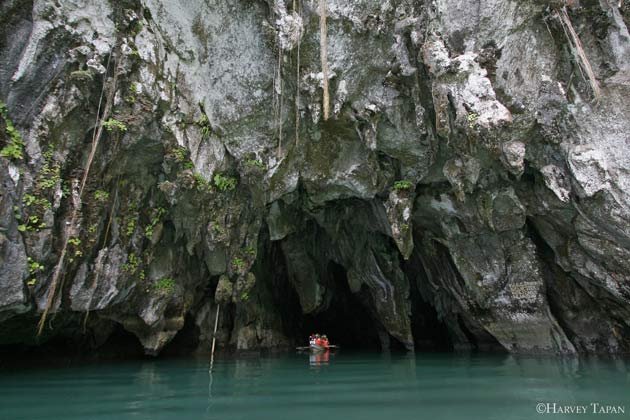Berwisata ke Situs Warisan Dunia
Mengunjungi tempat-tempat yang masuk ke dalam Daftar Warisan Dunia UNESCO akan memberikan gambaran besar mengenai kebudayaan dan karakter dari negeri tersebut. Di Filipina, ini berarti berwisata di bawah air, atau mendaki gunung, atau bahkan di antaranya. (Maui V. Reyes, Yahoo! Southeast Asia).
Tubbataha Reef is such a popular dive destination that people usually book a year in advance to go. To get there, you need to take a 10-hour boat ride from the nearest port (from the capital, Puerto Princesa) and get ready to live on a boat for a couple of days. Visitors can’t set foot on the sand bars in the area, but should your sea legs fail you, you can set foot on the ranger station. Don’t count on a cellular signal as well. But with the mind-blowing marine life waiting for you underwater, you probably won’t mind. Time to drop off the grid. (Photo by Thinkstock).
Subterranean River National Park
If you’re not scared of dark, tight spaces, then book a trip to Puerto Princesa, Palawan to see the Subterranean River National Park. It is the longest subterranean river in the world, running about 8.2 kilometers—and it’s also one of the rare rivers that flow out into the sea from an inland source. (Photo by Harvey Tapan).
This makes the Subterranean River National Park area rich with a mountain-to-sea ecosystem, and is home to two threatened bird species: the Palawan Peacock Peasant and the Philippine Cockatoo. You’ll need to get a permit from the Tourism Information and Assistance Center (it costs P200 for foreign tourists) before hopping in a boat that takes you as far as 5km into the cave (it’s hard to navigate further than that). The entire “exploration” takes about 45 minutes. (Photo by Harvey Tapan).
Rice Terraces of the Cordilleras
More than 2,000 years ago, the Ifugao tribe of the Philippines carved off parts of the Cordillera mountain range to plant rice. If those centuries-old rice terraces aren’t impressive enough, think about this: if laid side-by-side, the terraces span about 22,400 kilometers, which is believed to encircle half the globe! There are five rice terraces in the Cordilleras included in the cultural landscape category of the World Heritage List: Batad, Bangaan, Mayoyao, Hungduan and Nagacadan. The view to stop you most in your tracks is the one of Batad, with its ampitheatre-shaped terraces. To get there, you need to take a butt-numbing 9-hour bus ride from Manila to Banaue (that’s the most direct way), and let the sleepy mountain towns and endless mountain views welcome you to the terraces. (Photo by Thinkstock).
The Historic Town of Vigan
Longganisa (pork sausage links). Bagnet (deep fried pork belly). Empanadas (stuffed pastry). Oh, and tons of old-world landmarks that would make you want to don a Filipiniana costume and explore the town via calesa (horse-drawn carriage). The capital of Ilocos Sur, Vigan is the best-preserved planned Spanish colonial town in Asia (particularly Calle Crisologo), and a standing historical landmark of what the old East and Southeast Asian trading towns looked like. (Photo by Harvey Tapan).
Bring comfortable walking shoes or enough cash to shell out for a calesa ride if you truly want to explore and experience Vigan: Calle Crisologo is closed to motor vehicles, to preserve its natural cobblestone streets. (Photo by Harvey Tapan).
Baroque Churches
Should you ever find yourself in the only predominantly Catholic country in Asia, a visit to one of its historic churches ought to be included in your itinerary. The World Heritage lists four baroque churches built during Hispanic times, between the 16th and 18th century, located in the capital Manila, the province of Iloilo and two in the Ilocos region up north. The Paoay Church (photo) in Ilocos Norte is stunning enough to make you want to walk down the aisle in such a historic structure. Nuestra Señora de la Asuncion Church down south in Ilocos Sur also ought to be a heritage stop. Because unlike most churches located in the center of town, the Nuestra Señora sits on top of a hill, and you’ll have to climb a flight of 82 steps to get to it. The climb is worth it though—not only for the quad workout, but also to see the church’s unique architectural structure, reminiscent of a stonewall fortress used by early Spanish settlements. (Photo by Thinkstock).
Category: Wisata Dunia



















0 komentar